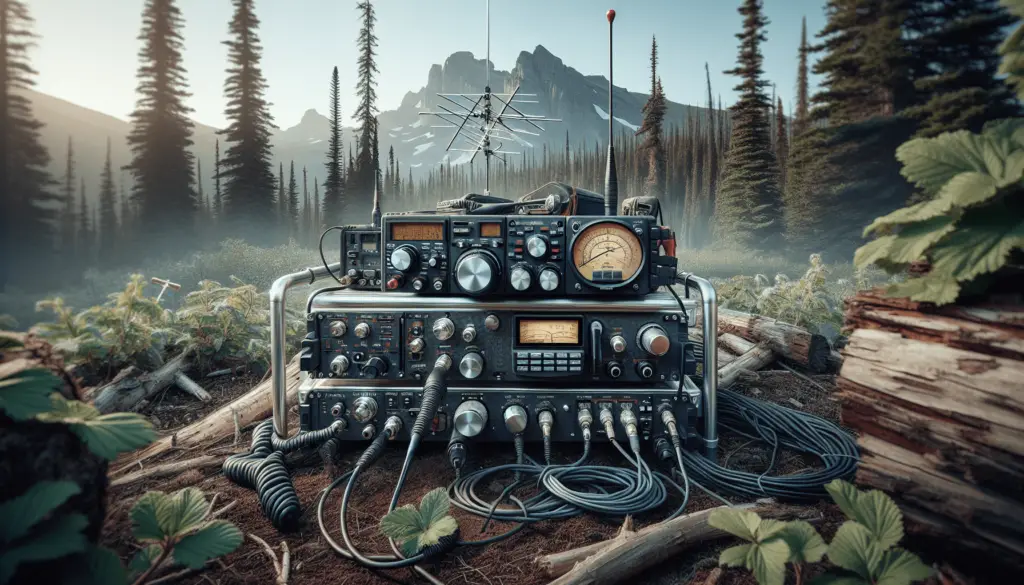Are You Interested in Off-Grid Communication?
If you are someone who loves exploring the great outdoors and going on adventures away from the hustle and bustle of city life, you may find yourself in situations where traditional forms of communication such as cell phones are not reliable. In such cases, setting up a ham radio station can be a lifesaver. In this article, we will guide you through the process of setting up your own off-grid communication system using a ham radio station.
What is a Ham Radio Station?
A ham radio station, also known as an amateur radio station, is a set of equipment designed for two-way radio communication among amateur radio operators. These operators, also known as hams, can communicate with each other using various frequencies allocated by the government for amateur use. Setting up a ham radio station allows you to communicate with other hams locally, nationally, and even internationally, depending on the equipment and frequencies you use.

Why Choose Ham Radio for Off-Grid Communication?
When venturing off-grid, traditional forms of communication such as cell phones may not work due to the lack of infrastructure in remote locations. Ham radio, on the other hand, provides reliable communication without the need for an existing network. With a ham radio station, you can communicate directly with other operators or even assist in emergency situations where other forms of communication may be unavailable.
Benefits of Using Ham Radio for Off-Grid Communication
Using a ham radio station for off-grid communication offers several benefits, including:
- Reliability: Ham radio operates independently of cellular networks, making it a reliable form of communication in remote areas.
- Emergency Communication: In emergencies, ham radio operators can provide vital communication services when other methods are not available.
- Global Reach: With the right equipment and frequencies, you can communicate with other hams around the world, expanding your communication reach.
Setting Up Your Ham Radio Station
Now that you understand the importance of ham radio for off-grid communication, let’s walk through the process of setting up your own ham radio station.
Licensing Requirements
Before you can operate a ham radio station, you must obtain a license from the governing authority in your country. The licensing process typically involves passing an exam to demonstrate your knowledge of radio operating procedures, regulations, and technical concepts. Once you have obtained your license, you will be assigned a call sign that uniquely identifies you as a licensed ham radio operator.
Equipment Needed
To set up a basic ham radio station, you will need the following equipment:
| Equipment | Description |
|---|---|
| Transceiver | The transceiver is the main component of your ham radio station, combining the functions of a transmitter and a receiver. |
| Antenna | An antenna is essential for transmitting and receiving radio signals. The type of antenna you need will depend on the frequencies you plan to operate on. |
| Power Supply | A power supply provides the necessary electricity to operate your ham radio equipment. Depending on your setup, you may need a battery or a generator for off-grid use. |
| Coaxial Cable | Coaxial cable is used to connect the transceiver to the antenna, ensuring efficient transmission of radio signals. |
| Grounding Equipment | Grounding equipment helps protect your equipment from lightning strikes and static electricity. |
Setting Up Your Antenna
Proper antenna installation is crucial for the performance of your ham radio station. Here are some tips for setting up your antenna:
- Choose the Right Location: Select a location that is free from obstructions and interference to ensure optimal signal transmission.
- Install the Antenna Properly: Follow the manufacturer’s instructions for installing and grounding the antenna to maximize its efficiency.
- Perform Regular Maintenance: Inspect the antenna regularly for signs of wear and tear, and make any necessary repairs to maintain its performance.
Operating Your Ham Radio Station
Once you have obtained your license, set up your equipment, and installed your antenna, you are ready to start operating your ham radio station.
Basic Operating Procedures
When using your ham radio station, it is essential to follow basic operating procedures to ensure clear and effective communication:
- Listen Before Transmitting: Before transmitting, listen to the frequency to ensure it is not already in use.
- Identify Yourself: Always identify yourself by your call sign when communicating with other operators.
- Follow Proper Etiquette: Use clear language, speak slowly and distinctly, and avoid interrupting other operators during a conversation.

Conclusion
Setting up a ham radio station for off-grid communication can be a rewarding and valuable experience. By following the steps outlined in this article, you can create a reliable communication system that will keep you connected even in the most remote locations. Whether you are an experienced ham radio operator or new to the world of amateur radio, setting up your own off-grid communication system will open up a world of possibilities for exploration and adventure. Happy communicating!
